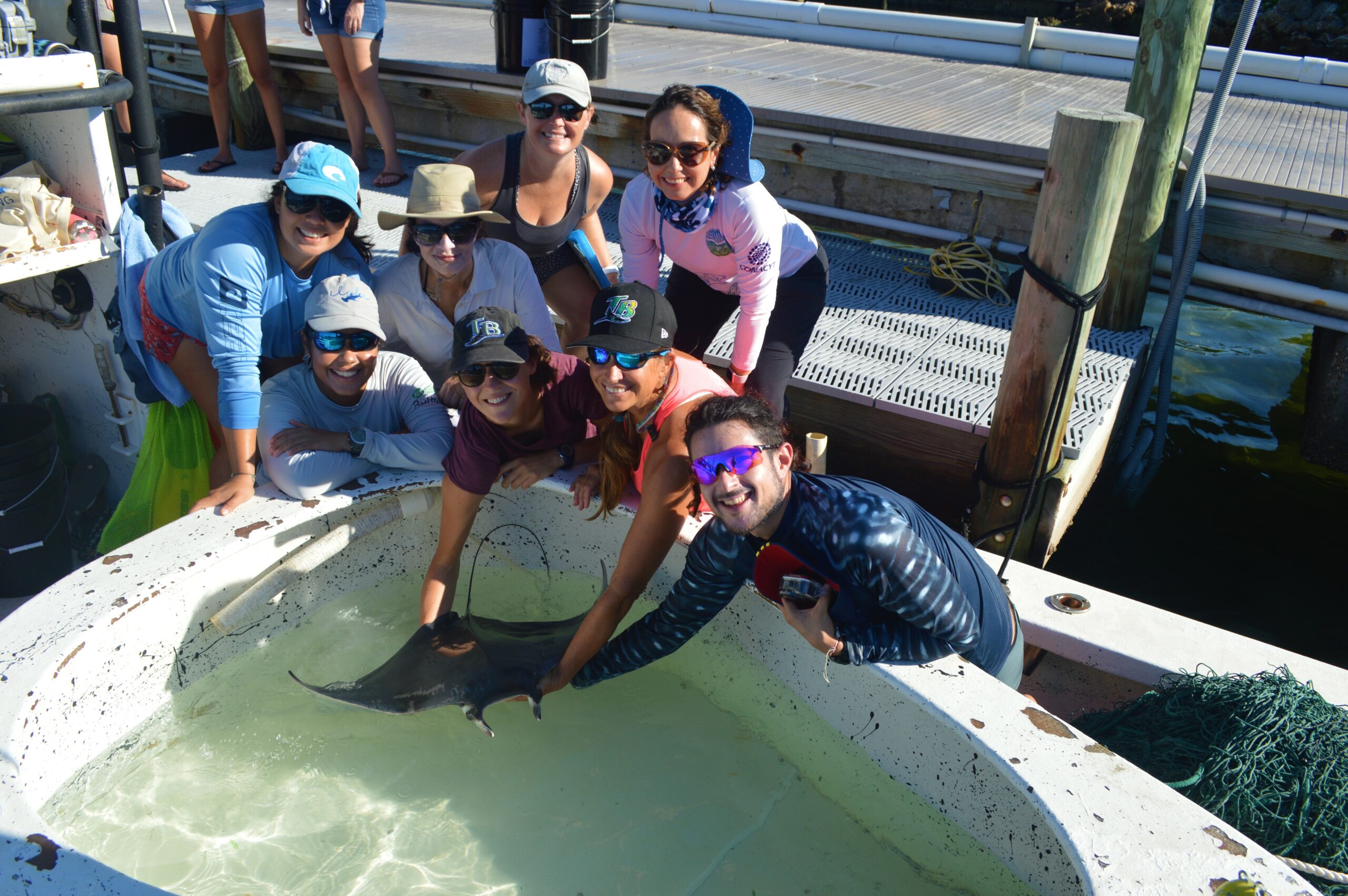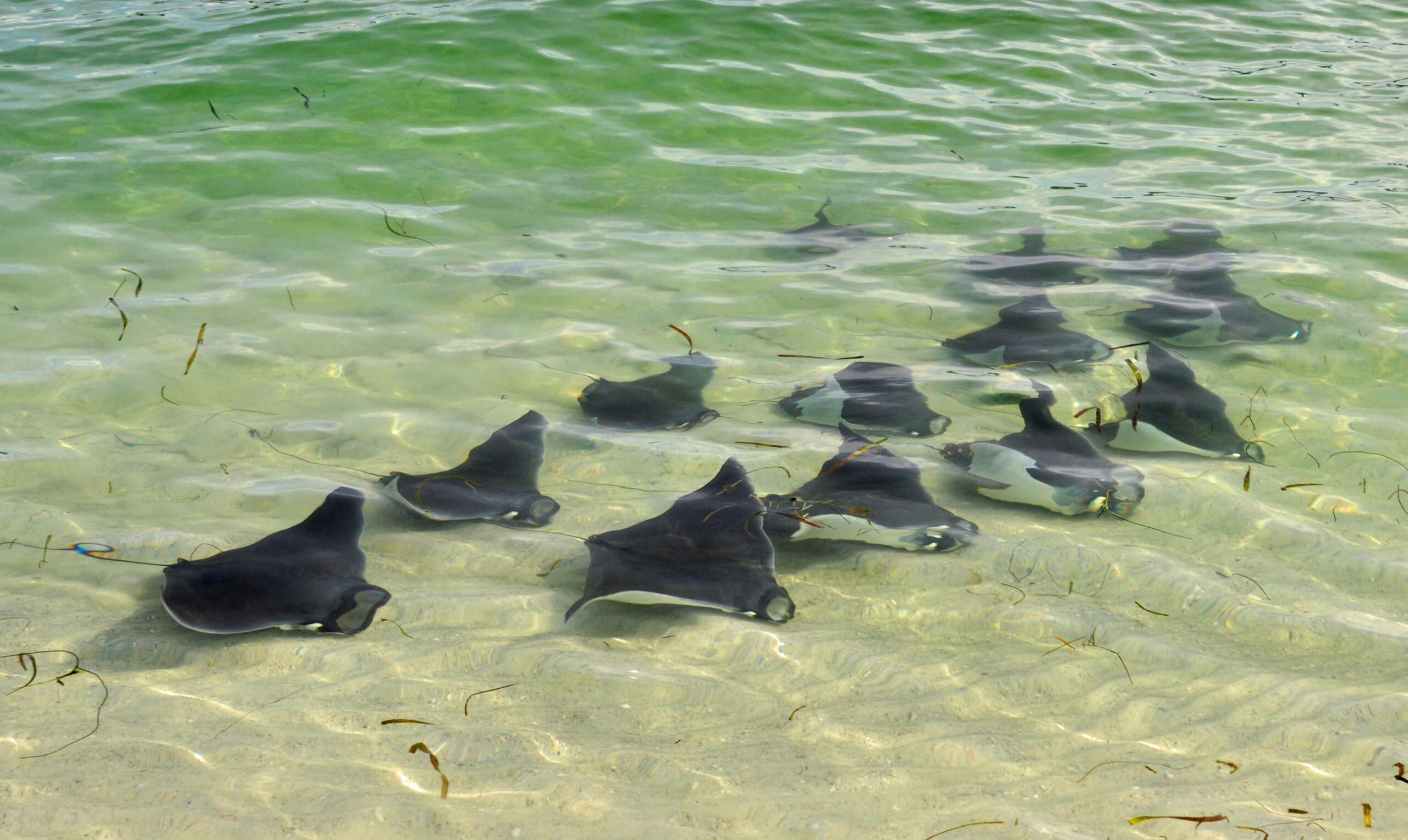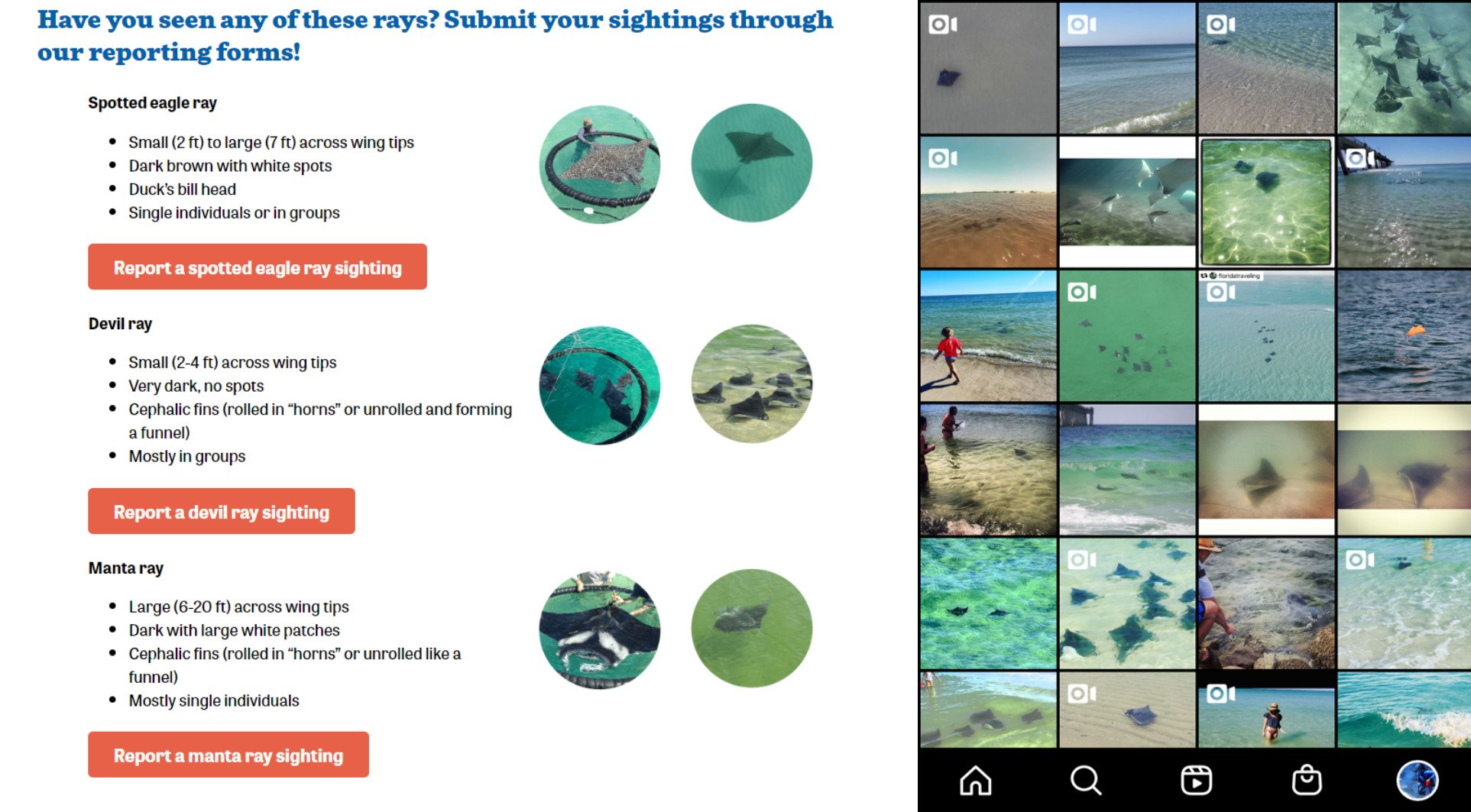‘Mini manta rays’, the best kept secret in the Florida Panhandle?
Florida is known for its incredible wildlife: alligators, manatees, dolphins, sharks, turtles, and waterbirds… but very few people know that its coastal waters are also home to a “mini manta ray” called the Atlantic pygmy devil ray (Mobula hypostoma). In Mote Marine Laboratory’s Sharks and Rays Conservation Research Program, my mentor Kim Bassos-Hull and her colleagues have been studying spotted eagle rays since 2009 in the waters off the west coast of Florida. Starting in 2013 during eagle ray fieldwork, they occasionally observed and opportunistically caught and collected data on their barbless cousins, the pygmy devil rays. I was lucky to have my first encounter with one when I visited Kim and Mote Marine Lab after my master’s degree, in October 2021.

A juvenile pygmy devil ray caught in Sarasota, FL, in October 2021. Mote Marine Laboratory was hosting a workshop with the MesoAmerican Reef Chondrichthyan (MARCHON) group, so this little guy was the perfect model to demonstrate hands-on research techniques on rays! Credit: Mote Marine Laboratory
Coincidentally, around the same time, Kim was contacted by Okaloosa County Coastal Resources marine biologists, in the Florida Panhandle (500 km NW of Sarasota, in the northeastern Gulf of Mexico) to start a collaborative study on pygmy devil rays in their area. Indeed, an increasing number of locals and tourists were reporting the presence of “baby manta rays” along the coast every fall/winter, and everyone was eager to learn more about them. After years of collecting opportunistic data in Sarasota, there was finally a lead on where to find this poorly-known species in Florida reliably and thus, the possibility to launch a dedicated research project! And this is exactly what Kim and I did, and how this became my dream PhD project.

A school of juvenile devil rays filter feeding in the shallow coastal waters of Sarasota. Photo by Ken Lancaster | © Mote Marine Laboratory
As a scientist, the first step when diving into a research topic is to search and read the available scientific literature. Well, let me tell you there is incredibly little information published on the Atlantic pygmy devil ray! In comparison to the large and placid manta rays which are easier to spot, dive with and identify, devil rays are generally more skittish and thus have stayed under the radar until very recently. Additionally, the different devil ray species can be tricky to tell apart when the observer is not familiar with them, so misidentification has hindered previous research efforts.
Based on our new collaborators’ input, I decided to carry out an extensive search for pygmy devil ray sightings in Florida on social media. I was not disappointed! Facebook, Instagram, YouTube and even TikTok secretly hold hundreds of photos and videos of pygmy devil rays feeding in groups in the waves, jumping, or swimming along the shore. Most of them appear to have been taken in the Florida Panhandle between October and April each year. Today, with the precious help of Morgan Ferguson (Kim’s high school intern for several years), we are working hard at recording this valuable data in a table that now contains over a thousand observations, and from which we hope to learn more about the species’ distribution and seasonality in Florida. Kim and I also created an online reporting form where citizens can directly submit their observations.

The bright side of working in a populated and touristy area? Citizen science can be a powerful tool to study an elusive species. Left : the online citizen science forms to report endangered rays on Mote website. Right: a glimpse of the devil ray sighting data hidden in social media such as Instagram.
Thanks to the support of Save Our Seas Foundation and the contribution of multiple research collaborators, we will use acoustic telemetry and population genetics to fill critical knowledge gaps on these “mini mantas” in the western Atlantic region and support their conservation and management.
Stay tuned for exciting project updates coming very soon!
